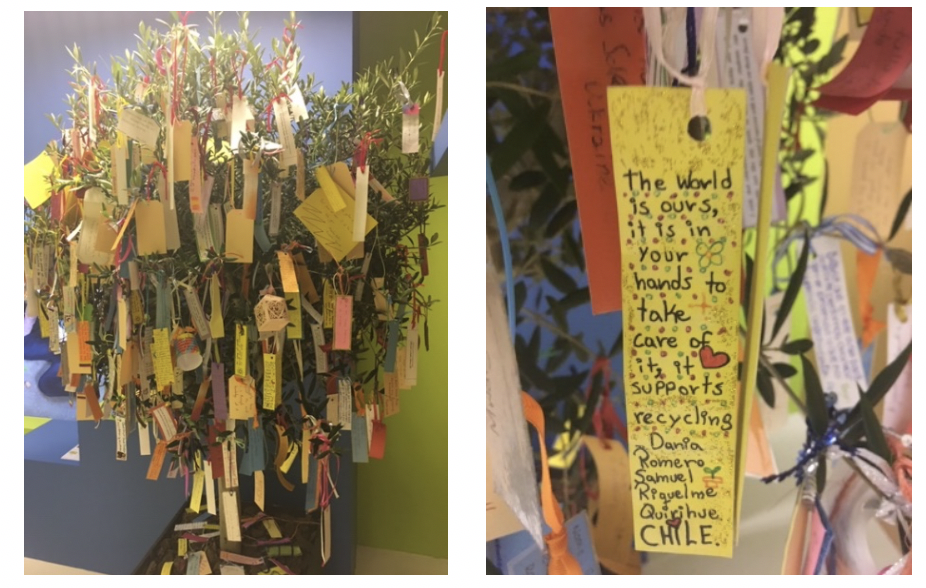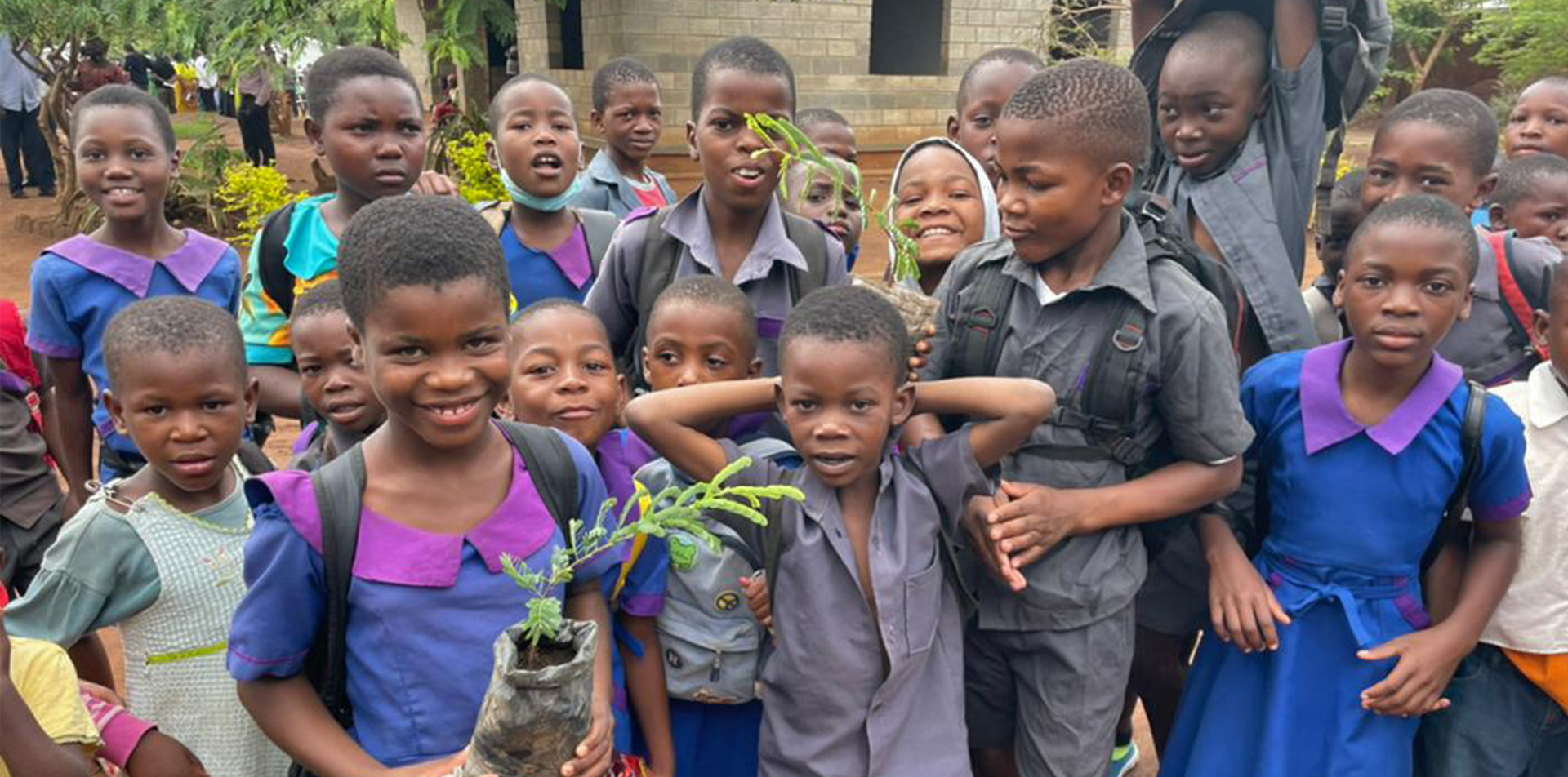Turn one of the trees you planted (or an established tree) into a wishing tree.

Tree created for GESF 2018 by the Varkey Teacher Ambassadors and their students.
Why a Wishing Tree?
Adding wishes to a tree provides an opportunity for your students to share their hopes, dreams and aspirations for the future.
Idea for the layout of your wishes
You can make your wishes one-sided or two-sided based on the suggestions below. Alternatively, you can create your own layout.
1. SIDE 1 - WRITE A WISH
Students may like their wish to reflect their hopes for:
• The tree they have planted
• What the future will look like when their wishing tree is 100/1000 years old
• Other children, humanity, animals, the environment, themselves, school, early childhood service or community.
Please do not be limited to this list as we are sure your students will have amazing ideas for their wishes.
Wishes can be written as statements, poems, in point form or even drawn. Please feel free to be as creative as you like.
As this project embraces and celebrates diversity in all its forms, we encourage your students to write in their mother tongue. If your students are not writing yet, please feel free to get them to draw their ideas and you can write for them.
Wishes tend to blow off their trees; some believe this means the wish is coming true! For this reason we ask that wishes be written on sustainable/recyclable materials. We certainly do not want our wishes to pollute our environment!
2. SIDE 2 - COMBINE YOUR WISH WITH A COMMITMENT TO POSITIVE ACTION.
If you like, your wishes can have writing on both sides:
• Front side – students write their wish. For example, “I wish people to be more kind.”
• Reverse side - students write an action they will take to help the wish come true. For example, “Each day I will smile at someone new.”
Inspirations for the Wishing Tree
Making wishes is common to many cultures and religions. Following are just some examples if you know of others please feel free to share.
1. The Japanese Tanabata festival - people write wishes (sometimes in the form of poetry) on strips of paper and hang them on bamboo. Some believe that when the strips of paper are blown by the wind the wishes are spread into the atmosphere. This is like the beliefs underpinning Tibetan prayer flags that are used to promote peace, compassion, strength and wisdom.
2. Wishing trees are popular in Hindu and Buddhist religions.
3. Making wishes are part of European traditions e.g. wishing wells, fairy tales.
4. Children like to make wishes.
5. Wishes are positive affirmations and therefore promote hope in people.
6. Yoko Ono’s Wish Tree art installation.
Read more about Wishing Trees.
We hope participating in this project brings you and your students joy and a sense of hope and optimism for the future. Please feel free to share wishes and photos of your wishing tree share on plant-ED.net and/or @WishingTreePro.

